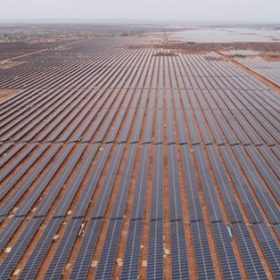Maximizing the potential of PV irrigation in Spain’s ‘Sea of Plastic’
Spanish researchers have developed an analytical model to optimize the operation of PV water pumping systems. They say simultaneously irrigating different parts of a farm could help minimize costs and maximize energy use. The model was tested on an olive farm divided into four zones in the Spanish province of Almería.
Gujarat notifies guidelines for small-scale distributed solar projects
The state government’s Policy for Development of Small-scale Distributed Solar Projects 2019 allows any individual or company to set up solar plants in capacities ranging from 0.5 MW to 4 MW for sale of electricity to the DISCOMs.
ADB extends $250 million loan to EESL for energy efficiency initiatives
The investment—part of a $592 million assistance package—will be used to promote adoption of smart meters, distributed solar photovoltaic systems and e-vehicles in India.
Distributed storage market to grow nearly twentyfold by 2028
Market intelligence company Navigant Research has developed a country forecast of the global market. Incentives and pricing will be the main driver of installations, though the market will continue to be concentrated in certain key regions, including India, for now.
French consortium develops hybrid storage and co-generation system
The Smart Energy Hub can operate in electrolysis mode to store renewable energy as hydrogen, or in fuel cell mode to produce electricity and heat from previously produced hydrogen or methane. Its developers are the French Alternative Energies and Atomic Energy Commission and start-up Sylfen.
Lithium batteries – 12 lakh tons ready for recycling by 2030
The recycling market will experience a tenfold expansion between last year and 2030, driven by EV battery usage and portable electronics. Retrieving valuable metals and minerals is becoming a high priority and several dozen companies are already in position for the first big wave of end-of-life batteries.
France based IBS partners with ION Energy for Lithium battery pack manufacturing
The company aims to emerge as a global leader in battery pack manufacturing with plans to set up a manufacturing unit in India in 2020-21 and the USA.
Commercial rooftops will lead renewables growth in the next five years
Although the International Energy Agency’s latest renewables report forecasts impressive solar growth there is still a nagging feeling it has produced conservative estimates and the emphasis on sharing costs with grid operators is predictable.
“Solar curtailment in Andhra Pradesh, a willful violation,” NSEFI writes to power minister
Plant load factor for thermal power generators ramped up to 70-80% between July 2019 till date while solar power projects were arbitrarily backed down by more than 60-70% of their operational capacity during the same period.
Solar-plus-storage can boost investor confidence
A British study has found co-location of solar and storage may accelerate the deployment of profitable merchant renewable energy projects in the United Kingdom. The report predicts installed solar capacity in the U.K. could increase from around 13 GW next year to 19 GW in 2030 and 32 GW in 2040.















